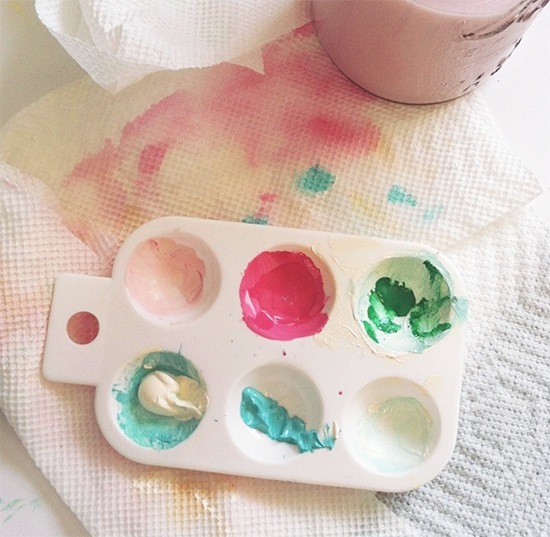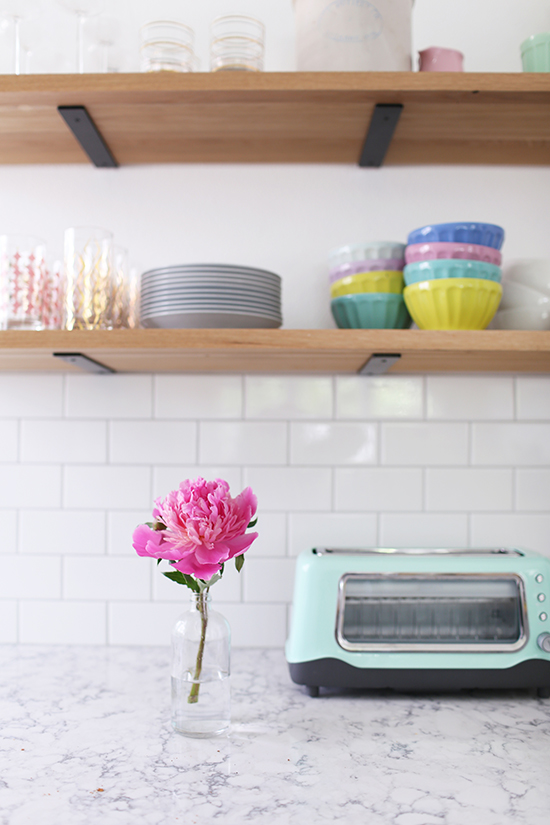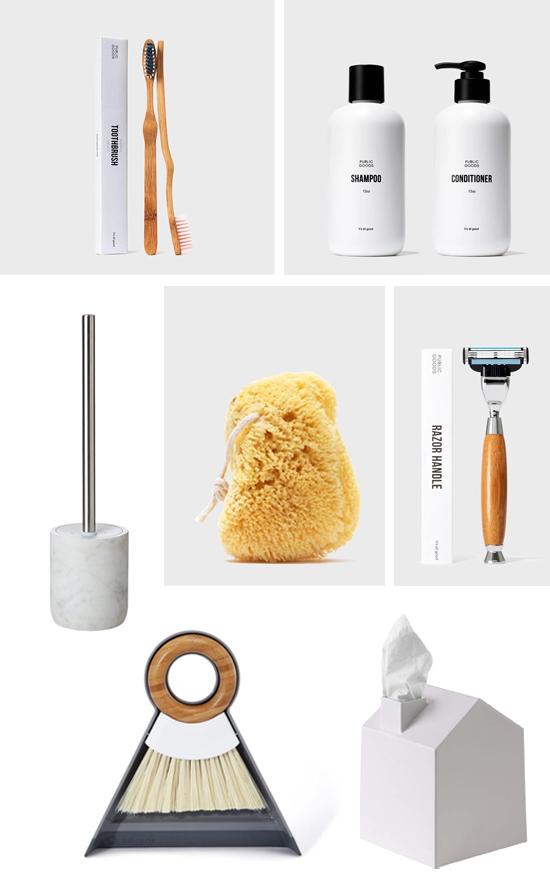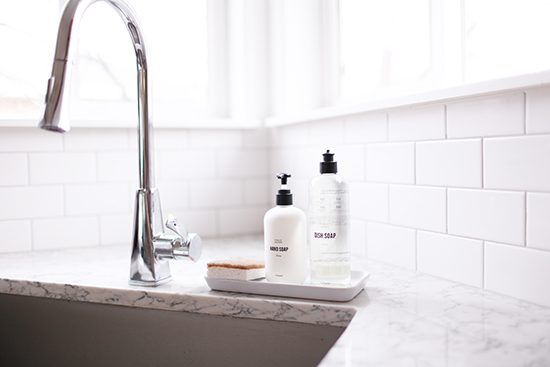01
This is a collaborative post. All opinions are my own.
This month, Ben and I will celebrate our ten year anniversary. TEN YEARS. A full decade. 3,620 days ago, I was zipping up a lace-lined white dress, my hair curled and my fingernails French-tipped, getting ready to walk down the aisle to the love of my life. We stood in front of an old, mossy apple tree and promised to love each other through thick and through thin, for richer, for poorer, in sickness and in health. We may have been young (twenty one and twenty three), but we meant what we said. And though we've had our fair share of ups and downs over the past ten years, our love is deeper and stronger than it ever was. We have so much to celebrate and appreciate from the past ten years, and so much more to look forward to in the decades to come. I'm sure that ten years from now, we'll probably have much wiser advice to share. But for now, I thought I'd share some lessons learned, in no particular order, for the stage of marriage that we have experienced so far.
1. You have to actually communicate your expectations. If you want something to happen, you have to make it clear. You can't just hope your spouse will magically figure out your needs based on vague hints and telepathy. Talking about your feelings and asking for what you need requires being vulnerable and upfront with each other. Chances are, you both want to make each other happy, so open up and have those honest heart-to-heart conversations. This will save you from a lot of mutual disappointment. By the way, this also applies to negative things. If you're unhappy with something in your relationship, you have to let the other person know...you can't expect them to just know what's bothering you. A tough conversation is better than harboring resentment.
2. Pick your battles. Ok I know I just said to speak up about the things that are bugging you, but that doesn't mean you have to call attention to every little thing that irritates you. It’s not your job to “improve” your spouse or point out their flaws. There are big, important things you need to be on the same page about (you know, things like parenting and finances). Then there are little, meaningless things that aren't worth the argument...like if the other person squeezes the toothpaste tube "wrong", if they set the thermostat too hot/cold, if they forgot something from your shopping list, if they failed to put a new liner in the trash can, and so many other stupid things that couples fight about. ;)
3. The couple that laughs together, stays together. Speaking of those stupid battles (because they'll inevitably come up)...sometimes you gotta just look at each other, realize what ridiculous thing you're fighting about, and laugh. Laughing is the quickest way to de-escalate a situation and diffuse the tension. And in a positive sense, it's also a great way to connect. Have inside jokes, be silly with each other, watch funny shows, do weird things to crack the other person up, and giggle together. Laughter is the soundtrack to a great marriage.
4. Speak well of each other. This one is important. Be the president of your spouse's fan club. Compliment them, praise them, thank them often, and say nice things about them...both in front of them and behind their back. Don't bash your spouse in front of your friends, and try not to criticize them when you're alone. Words have the power to either build up or break down.
5. Find joint hobbies. A lot of people will tell you that it's important to maintain your separate interests, but I think it's even more important to find things you enjoy doing together. Having fun strengthens your relationship and deepens your bond. It makes you friends as well as spouses. Some of our favorite joint activities are hiking, playing games, and travel (above is our honeymoon to Puerto Vallarta, our first trip together. Since then, traveling has yielded many of our best memories). Parenting has changed the activities we're able to do together, but even in this stage of babies and toddlers, we try to find experiences we can share--even if it's as simple as a TV show we watch together, or a book we both read and discuss.
6. Prioritize time with each other. Before kids, this was easy for us. In our current life stage, it can definitely be a challenge to spend quality time together (our conversations are often usurped by poopy diapers and breaking up kids' fights). But as important as parenting is, it's even more essential to prioritize our marriage. Date nights are definitely nice...but making time for each other doesn't have to mean going to a restaurant. It could simply mean making the most of the time we do have--even if that's just at home, once the kids go to sleep. For us, it means putting the phones down, giving each other our undivided attention, and being fully present.
7. Material things don't make us happy. It can be tempting to blow your budget on bigger, nicer, newer things--especially when your peers are doing the same. But trying to keep up with the Joneses is a recipe for unhappiness. Ten years ago, it seemed so important to me to have a big, pretty diamond ring, but now I hardly think about it. In hindsight, I wish I would have known about ways to save money on my engagement ring, like buying a lab-created diamond. The price savings over mined diamonds would have allowed us to get the type of ring I wanted and leave more money in the bank for our early married life (plus, these diamonds are 100% conflict-free). Whether it's a ring, a car, a house, or something smaller, it's always smart to look for ways to save money and stay on budget. And if you can't find a perfect win-win, remember that material things don't make us happy in a meaningful and long-lasting way. Finances are one of the biggest causes of marital discord, so it's never worth insisting on buying something you can't afford.
8. Life is not a competition. Again, this applies to keeping up with the Joneses. Don't compare your relationship to that of your friends, or (worse) the people you follow on social media. Even more so, it applies to comparing yourself with your spouse. Try not to evaluate who "does" more. It's not a competition, and keeping score will only lead to arguments and resentment. After all, it's not possible for everything to be perfectly balanced and equal. Especially as your roles get redefined in early parenthood, it's important to remember: we are not competitors, we are a team.
9. Not getting your way is not always a bad thing. Coming from two different backgrounds and being two different people, conflict is inevitable. There will be many times that you have clashing, differing points of view. This is healthy and normal (in fact, if you never disagree that probably means one of you is holding back their true feelings, see #1). The great thing is, sometimes what you come up with together will be better than what either one of you would've chosen alone. As an example, I really wanted to go on a trip to Europe before we had kids...Ben wasn't very interested in Europe, but as a compromise to me, he asked if we could see Iceland as one of the countries. At the time, I had never heard of anyone visiting Iceland, but it turned out to be amazing and one of my favorite travel destinations ever!
10. Listening is important. This can also be taken in multiple ways. When your spouse tells you how they're feeling, listen. Listen to understand, not just to respond. On the other hand, when you're talking, listen to what's coming out of your own mouth: your tone of voice, and the words you're using.
11. Dream together. I love this one. Discuss your future together. Have shared dreams, not just separate individual dreams. Set goals for yourselves as a family, and scheme and plan how to reach them together. This will help you stay on the same page about the big things. Plus, it's a fun conversation that will help you learn more about each other's innermost hopes.
12. A little kindness goes a long way. Last but not least, be kind to each other. Show your appreciation for all that your spouse does, whether it's by buying their favorite ice cream at the store, giving them a backrub, or simply saying "thank you so much." Acknowledging the sacrifices that the other person makes and recognizing all the hard work they do, can go a long way towards maintaining a happy marriage.
P.S. I wrote a similar post back in February, with marriage advice for our younger selves. This time, I tried to share some different pieces of advice...but I still agree with everything I wrote in that post as well! What other lessons would you add?
18
This is a collaborative post. All opinions are my own.
When Ben and I were dating, one of our favorite things to do together was paint. We'd sit side by side, peacefully working on our canvases and chatting occasionally. Our works of art weren't exactly masterpieces, but they were fun to create. It's been a long time since we painted together (with little kids, it's not exactly like we have hours to sit down and dabble with art just for fun), but I've been inspired to restart some creative hobbies that we can do with our kids. Here are some painting ideas to build memories with little budding artists.
Abstracts
Abstract art is a great way to get kids started with painting, for obvious reasons. There are no limits, no parameters and whatever you splash on the canvas goes. Having fun with colors and textures and playing around with techniques is part of what makes abstract art so enjoyable. Choose a canvas size and a color palette that works for your gallery wall or mantel, so you can actually put your kids artwork up in a main living space instead of hiding it away in storage. It'll make them feel super proud every time they walk by.
Painting Objects
Not every kind of art has to be on paper or canvas. You can have fun painting all sorts of objects, like a ceramic mug for Father's Day, wood beads for a necklace for grandma, or painted rocks to decorate your front porch. Painting practical objects turns them into special, heartfelt, one-of-a-kind gifts. Just make sure you choose paint that works with whatever medium you’re choosing!
Finger Paints
Painting doesn’t always have to involve a brush, either. Finger painting is not only fun, but it’s a great way to relieve stress. Something about getting your fingers into the cool, squishy paint is so satisfying. It’s also a great way to really tap into creativity without worrying about a piece of art being “perfect”. For kids, I recommend setting up the project outside in the grass, and putting them in old clothes you don't care about (or if they're young enough, just let them run around in a diaper).
Easy Landscapes
If your kids want to create more realistic art, set them up for success to build their confidence. Watercolor is great for easy landscapes; it's not terribly messy and is pretty forgiving of mistakes. To start with, try scenes like sunsets and beaches where the colors can blend into each other and they don't have to be too precise. When they're ready for scenes with more fine detail, there are plenty of guides and tutorials they can watch for ideas and help with technique.
No matter what project you choose, painting is a rewarding, enriching and fun activity that you can enjoy solo or with the whole family. Instilling a love of art is always a good idea. Let creativity and joy reign!
15
This is a collaborative post. All opinions are my own.
Some things, we bring into our homes mostly because they're pretty--things like art, vases, pillows, and decor. Then, there are the necessary things that aren't so attractive. These everyday household items often sit on our counters and our nightstands, messing up our aesthetic with their jarring colors, ugly bottles, and jumbled cords. Ok, clearly there are more important things in the world than a toaster that ruins your carefully curated vibes...but if you've spent a lot of effort remodeling your kitchen, you probably do care about the little details. That's how I got the idea for this blog post. After my kids burned a plastic Perler bead creation in our old (ugly) toaster, I got a new one that's cute enough to leave on the counter. It's given me a little bit of joy every time I see it and use it, which made me think...when something is part of your daily routine, you interact with it every day. So why not look for good-looking versions of those practical, everyday things? Of course, usually the problem is that cute, well-designed things come with higher price tags. But every so often, you can find functional items that are the perfect mix of beautiful AND budget-friendly. Here are fifteen practical household items that look way more expensive than they are.
1. Bamboo toothbrush - $4 for 2
2. Shampoo & conditioner - $4.50 ea
4. Marble toilet brush - $29
5. Sea sponge (so much better than a plastic shower puff) - $5.50
6. Bamboo razor handle - $11
7. Handheld brush & dustpan set - $9
8. Tissue box cover - $5
9. Avocado oil - $9
10. Cheese grater - $25
11. Bamboo straws - $5 for 6
12. Dish drying rack - $20
13. Essential oil - $10
14. Toaster - $40
15. Scrubber sponge - $2.75 for 4 (a lot prettier than a green and yellow sponge)
A lot of these things are from Public Goods, my favorite place to shop for household products. Besides being affordable and good-looking, their products are also sustainable. To learn more about them, head over to the Public Goods Blog, a blog curated for eco-conscious readers who want to improve themselves and the world around them. You’ll also find a wide range of relatable content: everything from how to make candles with their essential oils and how to make bread without yeast to informational content about how to use essential oils for acne and how to make air-popped popcorn.
If you've never tried Public Goods before, you can also get 15% off with my code AILEENPGA.
01
This is a collaborative post. All opinions are my own.
If there's one piece of furniture that can make or break your family room or living room, it would be your couch. It’s likely the most comfortable spot in the room. It’s where you watch TV shows, bond with your kids, and entertain guests. It takes up a lot of space in the room and will probably be the anchor piece that dictates how the rest of the room is arranged. Because of its high-traffic nature, your couch also needs to be strong and durable to withstand damage. For all those reasons and more, couches can get expensive (the average sofa costs between $1,000 to $2,000). That's a pretty major furniture investment! Luckily, if you choose well, a good quality sofa can last for more than a decade. That's why this is one furniture purchase that you don't want to rush.
To start off your sofa shopping, you should review the best sofa brands. Some will probably align with your style preferences more than others. Style is a legitimate way to narrow down your choices, but you should also consider some objective factors to determine the quality and long-term comfort of any sofas you're considering. Taking the time to get this right will help you find a great sofa that can last you for years.
Tips for Buying a Great Couch
1. Check the size
Probably the number one mistake people make is choosing a sofa that's comfortable in the store...then getting it home and realizing it's too big (or too small) for the room. Make sure to measure carefully before you purchase anything. I like to use painters tape on the floor to check the sofa's dimensions in the space it will actually be in. You can also mock up a "sofa" with boxes and see if it feels like the right proportions. Also consider the length and depth. If you like laying on the couch, check that it's long enough to accommodate a comfortable sleeping position. As for depth, the back of the sofa should support your back and allow you sit with your feet on the floor (generally, taller people will want a deeper sofa).
2. Check the frame
The frame is what holds your couch together. It should be strong and solid if you want it to withstand lots of butts collapsing onto the couch (and in my household, children jumping on it). Cheap couches are usually framed with materials like plastic, particleboard, or metal. Instead, you'll want to look for a couch that uses a solid, kiln-dried hardwood frame. You'll also want to check that the legs are screwed on and not just glued. Twisting, warping, creaking, or wobbling are all signs of poor quality construction.
3. Check the padding
Adequate padding is what makes your couch comfortable to sit on. Feel all the corners of the couch and see if they are well-padded. You should not be able to feel the edge of the frame. If you can, it could mean that the padding will wear down quickly, making it uncomfortable in the long run.
4. Check the cushions
Your seat cushions should fit perfectly within the couch’s frame and there should be a balance between firmness and softness. If the couch is too soft, it may end up getting flattened over time. If it’s too firm, it won't have that sink-into-it comfort. Look for a cushion that feels comfortable when you sit down, but regains its shape quickly after you get up.
5. Check the arms
This is especially important if you have kids in the house who may sit, stand, or jump off the arms (I'm looking you, Ian and Emmett). If you want your couch to stand the test of time, check that the arms are tight and solid without any wobble.
6. Check the upholstery
Again, this is essential if you have kids (or pets). Look for fabrics that will be more durable, stain-resistant, and easy to clean. Leather couches are a good bet. Slipcovered sofas are also easier to keep clean since you can throw the slipcover in the wash as needed. There are also some performance fabrics that are made to withstand wear and tear. It's a good idea to get some fabric swatches ahead of time, and test out stain removal on those swatches before you make your final decision.
If you're considering a sofa from an online retailer, I also wrote a post a couple years ago with some tips for buying a sofa online...it's all about knowing what to look for!















